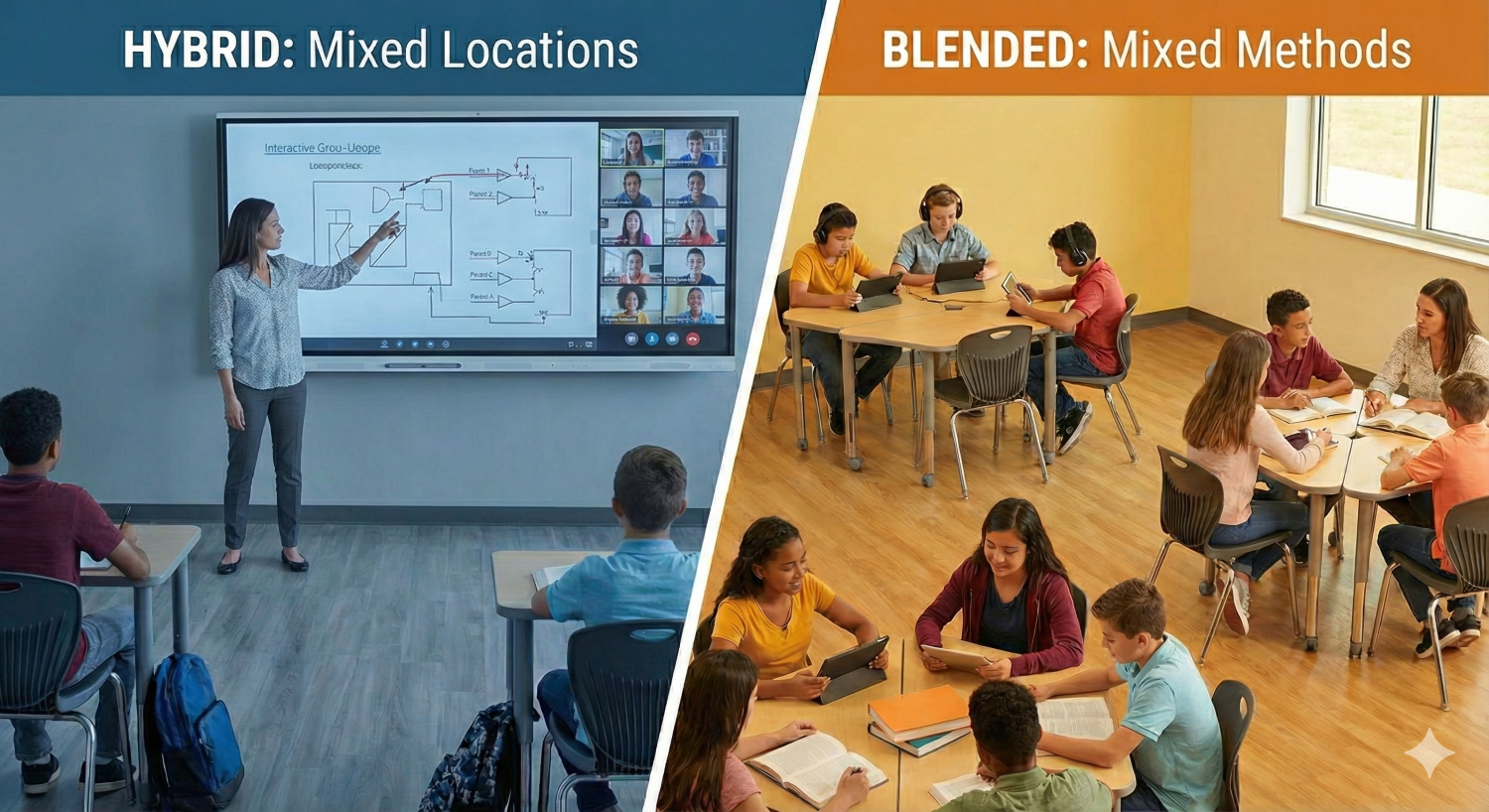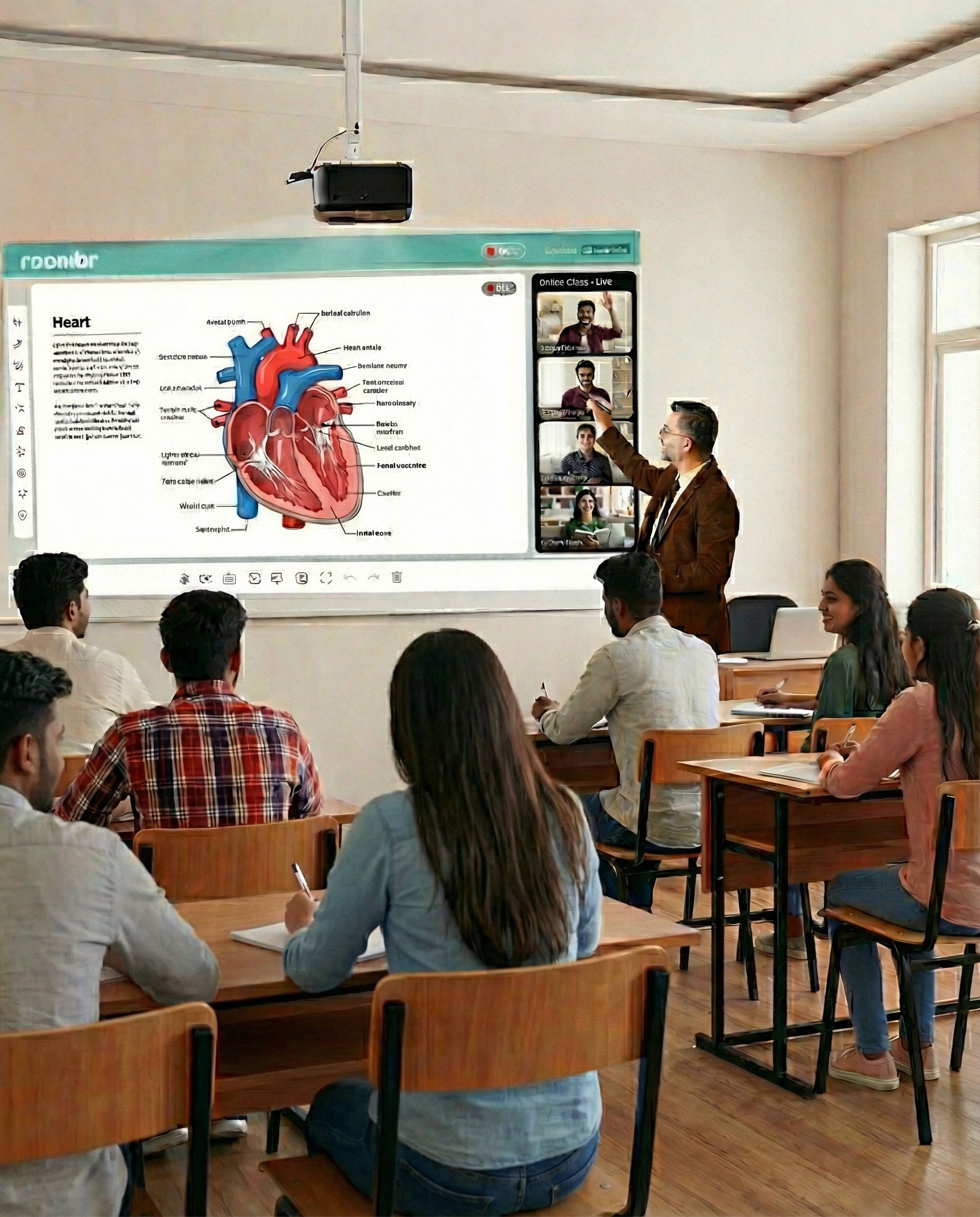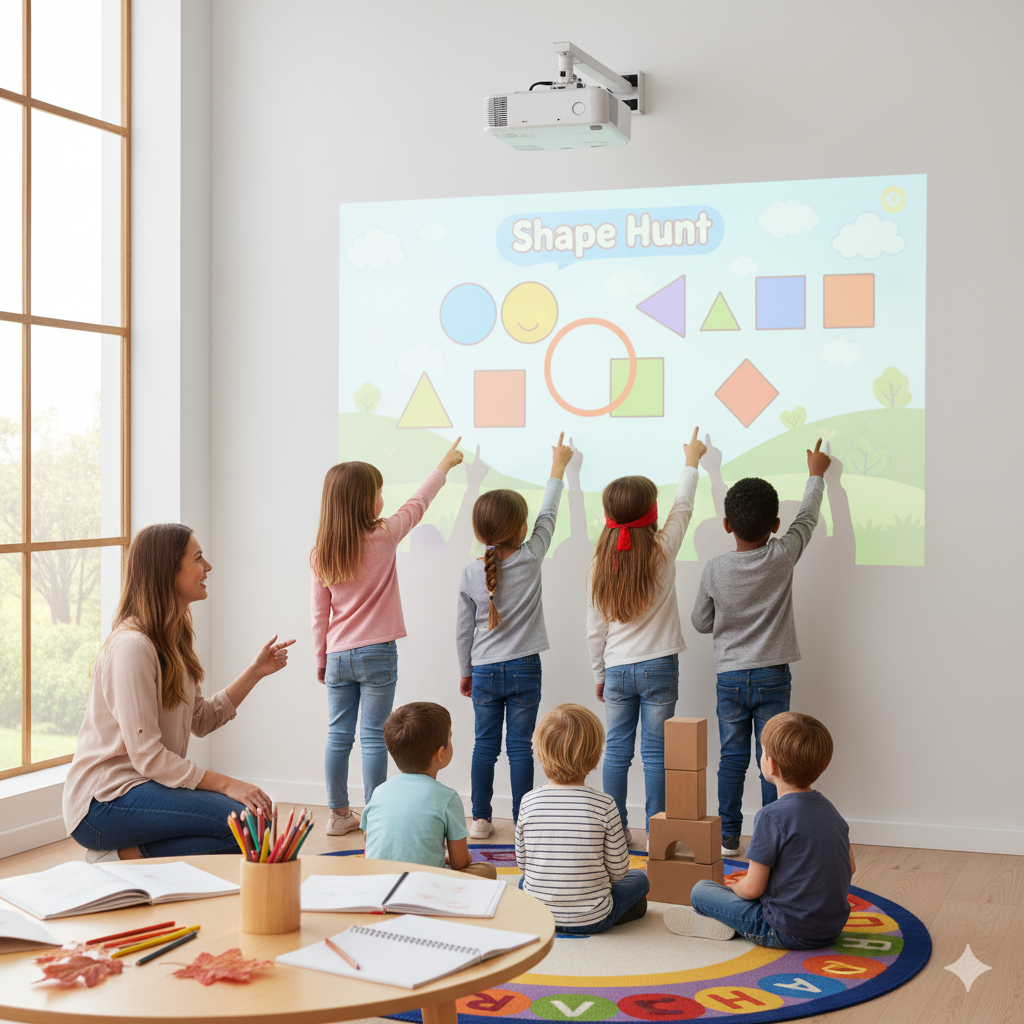Micro-Teaching with Macro Impact: Using Interactive Boards with Projectors for Bite-Sized Learning
.jpg)
Let's begin with a quick question.
When was the last time you delivered a 20-minute clear, well-paced, and comprehensive lesson only to realize that half your students had mentally disengaged after a few minutes?
You're not alone. It’s not a failure in your teaching. It’s a shift in how learners process information.
Research shows a marked decrease in attention spans in the digital era, with students typically sustaining focused attention for just 8–12 minutes at a time. That’s a challenge for traditional teaching, but also an opportunity. This is where micro-teaching can have substantial benefits. It is a focused instructional approach designed for today’s cognitive environment.
And the best part? You don’t need expensive upgrades. With just an interactive board with a projector, you can turn brief lessons into high-impact learning moments.
What is Micro-Teaching?
Micro-teaching is the practice of delivering content in brief, structured segments—usually between 3 to 10 minutes. Each segment is dedicated to one concept, skill, or question, with immediate feedback loops built into the process.
This isn’t about making lessons easier. It’s about breaking them into smaller parts so students can understand, use, and remember them better.
And it's not just a pedagogical trend. It's a neuroscience-backed learning model. According to a study published in the Journal of Applied Psychology, microlearning improves retention rates by up to 20% compared to conventional methods.
Why does it work?
- Focused attention: Learners engage more deeply in shorter bursts.
- Easier comprehension: Narrow objectives remove cognitive overload.
- Timely assessment: Teachers can check understanding in real time.
- Efficient remediation: Misconceptions are addressed before they accumulate.
In short, micro-teaching helps students learn better, faster, and remember longer.
How Does an Interactive Board with a Projector Help?
You may wonder: If micro-teaching is just about breaking things down, why bring tech into the picture?
Because bite-sized learning isn’t just about trimming content. It’s about enhancing interaction and engagement, which is where technology like interactive whiteboards and projectors steps in.
Here’s how an interactive board with a projector transforms short lessons into powerful experiences:
1. Visual Recaps and Real-Time Annotations
Instead of relying solely on verbal explanation, teachers can project a diagram, chart, or slide and annotate it live. With tools like Roombr’s interactive whiteboard features, you can highlight, underline, circle, or even sketch diagrams as you explain, converting your lecture into a dynamic visual narrative.
Research from Harvard’s Project Zero suggests that combining visuals with interaction significantly boosts recall and comprehension, especially in STEM subjects.
2. Real-Time Interactive Quizzes
Why wait till the end of the week for a test?
With embedded apps on a smart board or digital board for teaching, you can conduct 2-minute assessments immediately after each mini-lesson. Teachers can use tools like Google Forms or built-in quiz features to gauge understanding while the concept is still fresh.
This quick approach helps teachers check understanding right away and give faster feedback to students.
3. Student Reflections on the Board
After a quick explanation, invite students to come up and place a digital sticky note under categories like “Got it,” “Still confused,” or “Want to learn more.” You’ll receive instant insight into classroom understanding, without the need for formal surveys or time-consuming Q&A.
This also encourages metacognition, helping students monitor their own learning and express needs without fear.
4. Mini-Loop Video Integration
Many interactive boards with projector integration allow embedded videos to be paused and annotated. A 2-minute demonstration video—say, showing a chemical reaction or historical event—can be paused at key points while the teacher writes or explains.
This is gold for visual and auditory learners and supports differentiated instruction strategies.
5. Student-Led Presentations

Micro-teaching isn’t just a teacher’s job. Let students take over.
Using the digital board, students can create 1–3 minute presentations on subtopics. Not only does this reinforce their understanding, but it also fosters public speaking, collaboration, and digital literacy.
And because it’s tech-enabled, even shy students can express themselves visually rather than verbally.
Real Examples from Indian Classrooms
Let’s move beyond theory. Here are concrete examples from Indian institutions embracing this blend of micro-teaching and edtech:
📍 CBSE School, Delhi
Math classes began with 7-minute pre-work micro-lessons displayed on an interactive board with a projector. These included a visual problem, a live solution walkthrough, and a single quiz question.
Result: Average quiz scores rose by 12% in just two months.
📍 Engineering College, Bengaluru
Professors started recording 5-minute summaries post-lecture using the digital board and projector. These were uploaded to the LMS immediately.
Impact: Next-session attendance improved by 28%, as students saw value in keeping up with the content trail.
📍 Rural School, Kerala
An English teacher used the interactive whiteboard to conduct 10-minute pronunciation practice drills three times a week. Students mimicked words, reviewed video snippets, and corrected phonetics live.
Outcome: End-of-term assessments showed a 50% drop in pronunciation errors.
The best part? All of this was done using existing infrastructure. The shift wasn’t in equipment—it was in strategy.
Why Interactive Boards with Projectors Are Perfect for Micro-Teaching
Many institutions already own a projector-enabled digital board or smart board. But the tech remains underutilized—not due to a lack of features, but due to a lack of vision.
Here’s why these tools are ideal for micro-teaching:
- Budget-Friendly: You don’t need to buy a high-end flat panel to implement micro-teaching. Projector-based systems are still cost-effective and more than sufficient.
- Flexible: Teachers can move from a slide to an explainer video, to a live poll—all without switching devices.
- Efficient: You don’t need elaborate decks or modules. A single question, graphic, or video snippet can anchor an entire 5-minute teaching moment.
- Reusable: Record sessions, split them into clips, and use them for revision, flipped classrooms, or student access.
- Upgradeable: If your interactive board supports OPS (Open Pluggable Specification), you can upgrade software and operating systems without changing the hardware, future-proofing your investment.
Try It Yourself: A 4-Week Pilot Plan Using an Interactive Board with a Projector

Thinking of experimenting with micro-teaching at your institution? Here's a simplified pilot plan:
Week 1: Select a subject
Identify a 10-minute segment in each class for micro-teaching. Focus on one objective per session.
Week 2: Build your materials
Use your interactive whiteboard to create 3-slide presentations, mini-quizzes, or annotation-ready visuals.
Week 3: Deliver and collect feedback
Teach, record, and reflect. Add interactive elements like sticky notes or short polls at the end.
Week 4: Evaluate
Compare quiz scores, student engagement, and teacher feedback. Is comprehension up? Are students responding better?
If yes—and data usually supports this—scale it across subjects.
Need help training your teachers? Roombr offers comprehensive teacher training and guidance to help educators adapt existing lessons for a bite-sized format, without increasing prep time.
Expand the Experience with Digital Plug-ins
Want to make your micro-lessons more accessible and engaging?
1. Integrate with LMS
Sync interactive board content with platforms like Google Classroom, Moodle, or Canvas—so students can access recaps anytime.
2. Use Roombr’s App
Roombr offers a comprehensive and immersive learning app for teachers and students. Enable students to revisit recorded micro-lessons, annotate them, or practice quizzes on their own time.
3. Add Gamification
Incentivize learning with micro-badges and scoreboards for completing challenges or quizzes—especially effective for Gen Z and Alpha learners.
With this full-cycle system—teach, test, reflect, refine—you create a high-impact learning loop with minimal teacher fatigue.
FAQs for Educators
1. What is the role of an interactive board with a projector in micro-teaching?
An interactive board with a projector enables dynamic, bite-sized teaching by combining visual presentation, real-time annotation, and student interaction. It helps educators break lessons into digestible chunks while engaging learners through quizzes, videos, and collaborative tasks—all within a few minutes. This setup supports better comprehension and retention during micro-teaching sessions.
2. How does micro-teaching improve student attention and learning outcomes?
Micro-teaching aligns with cognitive science by catering to short attention spans and minimizing overload. Lessons focused on a single concept (3–10 minutes) are easier to process. Studies show that microlearning can boost knowledge retention by up to 20% compared to traditional instruction, making it a powerful tool for both student engagement and academic performance.
3. Can schools use existing classroom projectors and boards for bite-sized learning?
Yes. Many institutions already have the necessary infrastructure. A digital board or interactive whiteboard paired with a projector can deliver micro-lessons without additional investment. Teachers can present short lessons, annotate in real time, and embed quizzes or videos, making full use of their existing classroom technology.
4. How can educators start using smart boards for bite-sized instruction?
Educators can begin by identifying a 10-minute segment in their lesson plans. Using smart board features, they can present a single concept with 1–3 slides, integrate a brief quiz, or invite student interaction. This small shift—delivered consistently—lays the foundation for effective micro-teaching.
5. Is micro-teaching scalable across different subjects and age groups?
Yes. Micro-teaching is versatile and effective across K–12 and higher education, whether in science, language, or humanities. Its flexible format allows for tailored content delivery, making it suitable for young learners, teenagers, or adult students in rural and urban settings.
Teach Smarter with Roombr’s Digital Classroom Solution
Micro-teaching isn’t about cutting corners. It’s about focusing on what truly matters and delivering it in a way students can easily grasp and remember. With Roombr’s all-in-one interactive board with projector, you can transform everyday lessons into engaging, bite-sized learning experiences that stick.
At Roombr, we believe the future of education is not just faster—but smarter, sharper, and more human.
Not yet upgraded to a digital classroom? No problem.
Book a free Roombr demo and see how easy it is to get started.
Foziya Abuwala
Share
Step Into the future of
Education with Roombr

















